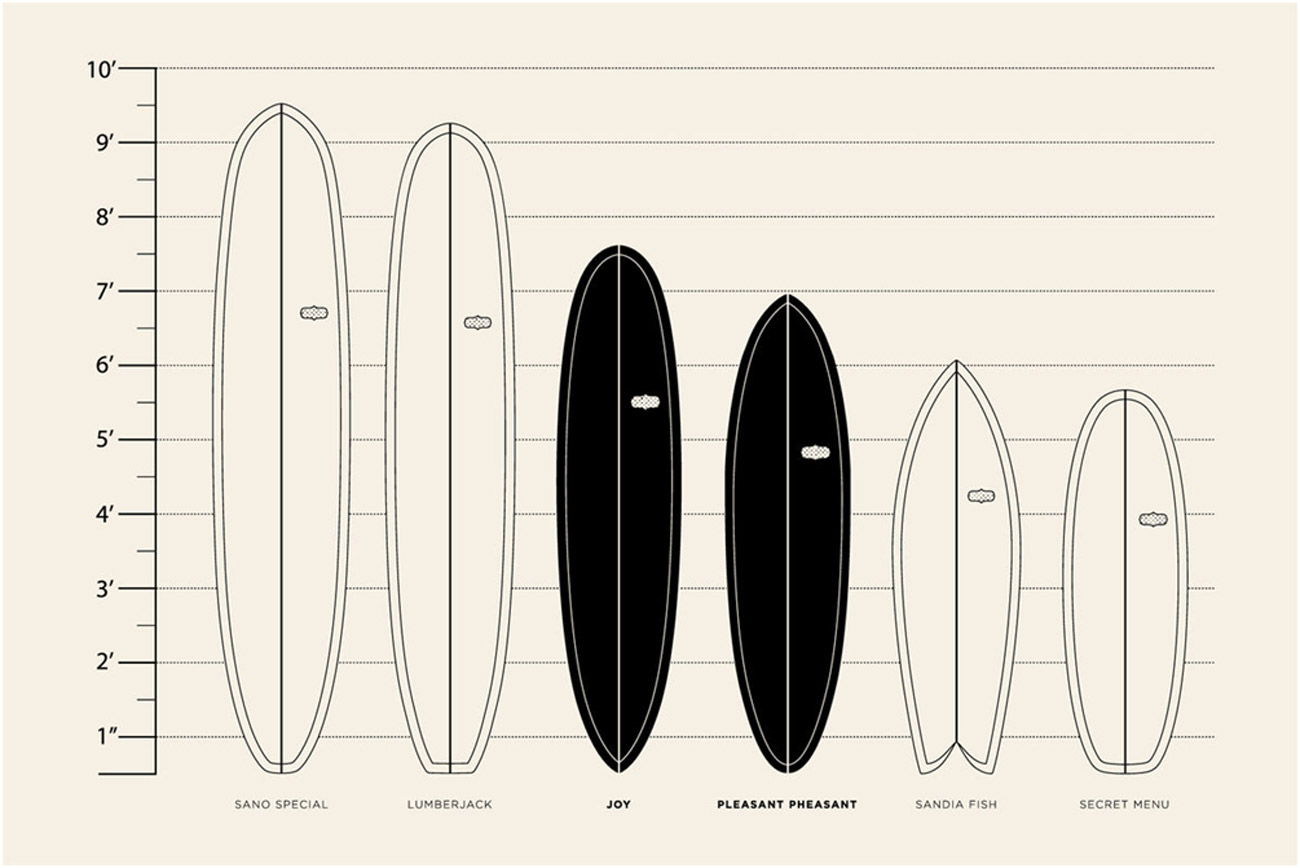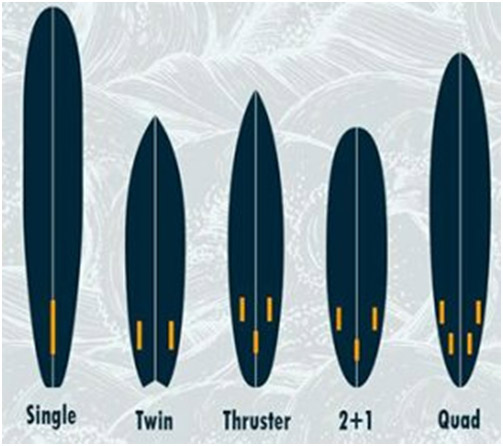
Stuck on a surfing plateau? Or maybe just want to switch up from the foamie/soft top boards. Feeling like your shortboard dreams are a little too… wobbly? Or maybe you’re tired of the big log’s slow turns and want a board that will actually let you draw some new lines? Welcome to the mid-length revolution.
At Surf Education Academy in La Jolla Shores, we’ve seen it over and over—surfers hit a skill ceiling, switch to a mid-length, and suddenly unlock a whole new level of stoke. This can happen for both shortboarders and longboarders.
Stuck on a surfing plateau? Or maybe just want to switch up from the foamie/soft top boards. Feeling like your shortboard dreams are a little too… wobbly? Or maybe you’re tired of the big log’s slow turns and want a board that will actually let you draw some new lines? Welcome to the mid-length revolution.
At Surf Education Academy in La Jolla Shores, we’ve seen it over and over—surfers hit a skill ceiling, switch to a mid-length, and suddenly unlock a whole new level of stoke. This can happen for both shortboarders and longboarders.
Whether you’re navigating the mellow sandbars in front of La Jolla Shores or Scripps Pier or looking to add variety to your quiver for weekend trips up the coast, the mid-length surfboard benefits are worth knowing.
Here’s why this board has become a secret weapon for progressing surfers in San Diego and beyond.
What Is a Mid-Length Surfboard?
A mid-length is generally between 7’0” and 8’0”, with enough volume to paddle easily like a longboard but more height than a shortboard. It’s the happy medium between the two extremes—a “just right” Goldilocks option for surfers looking to improve skills without feeling like they’re wrestling their board.
Once a go-to in the 1970s, mid-lengths are back in a big way thanks to a wave of surfers who appreciate style, flow, and versatility. It’s the board you see tucked under the arms of surfers in their 20s chasing style points and surfers in their 60s who still rip.
Why Mid-Lengths Help You Progress
1. Easier Wave Entry:
More foam = more fun. That extra volume means you’ll catch waves earlier, glide into sections with less effort, and build speed without frantically pumping down the line. In San Diego’s softer summer waves, this is a game-changer.
2. Stability Meets Maneuverability:
Mid-lengths have forgiving rails and a stable platform, so you can cross-step, trim, and even noseride on some shapes. But unlike a 9’6” log, you can also throw a smooth cutback without feeling like you’re steering a cruise ship.
3. Perfect Transition Tool:
Jumping straight from a longboard to a shortboard can be like going from a beach cruiser to a high-performance road bike—there’s a steep learning curve. A mid-length makes that transition smoother by sharpening your turns, forcing better foot placement, and building comfort with steeper takeoffs.
4. Boosts Skill Development:
The mid-length’s rail-to-rail potential forces you to refine your timing, positioning, and board control. Think of it like training with slightly heavier weights—you build technique and power that transfers to other boards.
When to Use a Mid-Length Board?
- Small, Mushy Days – San Diego’s summer south swells can be soft, and mid-lengths turn waist-high rollers into playgrounds.
- Shoulder-High to Overhead – The added paddle power lets you get in early and stay composed when the waves have more push.
- Point Breaks & Beach Breaks – From Cardiff Reef to La Jolla Shores, mid-lengths adapt to almost anything.
- Travel Quiver Essential – One board for varied conditions. Saves space and money.
Common Mistakes and Setup Tips
Mistake #1: Treating it like a shortboard.
The mid-length is about smooth style, not twitchy turns. Let the rail work for you. Instead of forcing the board on the wave, think about letting the board match the wave’s energy.
Mistake #2: Ignoring fins.
Try a 2+1 setup (single with sidebites) for control or go single fin for maximum trim. 2 small fins and one larger center fin. Control and looseness when needed.
Mistake #3: Skipping the basics.
Even intermediate surfers can benefit from lessons to refine paddling angles, positioning, and style. Most people want to skip the mid-lengths and jump right on a shortboard, before they’re skill ready.
Local La Jolla & San Diego Mid-Length Love
La Jolla Shores is a perfect mid-length playground. The north end near Scripps offers peeling rights on a clean swell, while the inside sandbars let you practice turns in forgiving waves.
The mid-length is a great board to have for San Diego’s summer swells. There’s a reason surfers from their teens to their 80s line up at La Jolla Shores every morning, especially during the summer time—it’s slow, rolling perfection for practicing trim, cutbacks, and footwork.
Mid-length surfboards allow intermediate surfers to catch more waves, while the more advanced mid-length riders will show you to properly use it on small and even decently bigger waves. (p.s. I enjoy having a 7’2 in my fleet of boards, nothing beats a mid-length and a shortboard on a nice surf-road trip)
Mid-Length vs. Other Boards

| Feature | Longboard (9’+) | Mid-Length (7’-8’) | Shortboard (Under 6’8”) |
| Paddle Power | Excellent | Great | Moderate |
| Maneuverability | Low | Medium-High | High |
| Wave Range | Small-Medium | Small-Large | Medium-Large |
| Style Potential | High | High | Medium |
| Learning Curve | Low | Medium | High |
FAQs About Mid-Length Surfboards
Should beginners start with mid-lengths?
Not usually. Beginners do best learning fundamentals on a longboard or longboard soft-top before stepping down to a mid-length for progression.
Why is the transition so important?
It reduces the frustration and skill plateaus that often happen when going straight from a 9’0” to a 6’2”. Usually 8’0 is a good place to start.
What fin setups work best?
A 2+1 setup offers a great mix of control and looseness. Single fins are fun for classic trimming.
Do mid-lengths work in big waves?
Yes—provided the shape is suited for it. Many mid-lengths handle overhead surf beautifully. Get use to your mid-lengths before rushing The Cove on double overhead North-West swells during the winter.

Expert Tips for Mastering a Mid-Length
- Use Your Rails – Don’t oversteer with your back foot. Engage the rail early in the turn.
- Find the Sweet Spot – Step forward for speed, back for turns.
- Match the Wave – On slower waves, ride forward and draw longer lines. On faster waves, keep a balanced stance.
- Practice in Variety – Surf it in everything from ankle-high rollers to overhead days.
*Ready to buy yourself a mid-length? Read this for the mid-lengths to buy*
Why It’s the Best Board for Breaking a Surf Plateau
At SEA, we’ve seen mid-lengths reignite stoke for surfers stuck in a rut. The versatility keeps sessions interesting, the paddle power helps you catch more waves, and the maneuverability pushes your skills forward.
It’s not just a “bridge” board—it’s a lifelong keeper for days when you want style, flow, and more time on the face.
Ready to Try One?
If you’re in San Diego, Surf Education Academy offers lessons and equipment guidance for surfers of all levels. We’ll help you test different lengths, fin setups, and techniques so you can find the perfect fit for your style and local waves.
Whether you’re surfing La Jolla Shores, Old Man’s, or heading up to Cardiff, a mid-length can give you that next level of fun and progression you’ve been looking for.
Book your lesson today and we’ll help you unlock the full potential of the mid-length.


 Preventing Injuries in Surfing: Top Safety Tips from a La Jolla Perspective
Preventing Injuries in Surfing: Top Safety Tips from a La Jolla Perspective